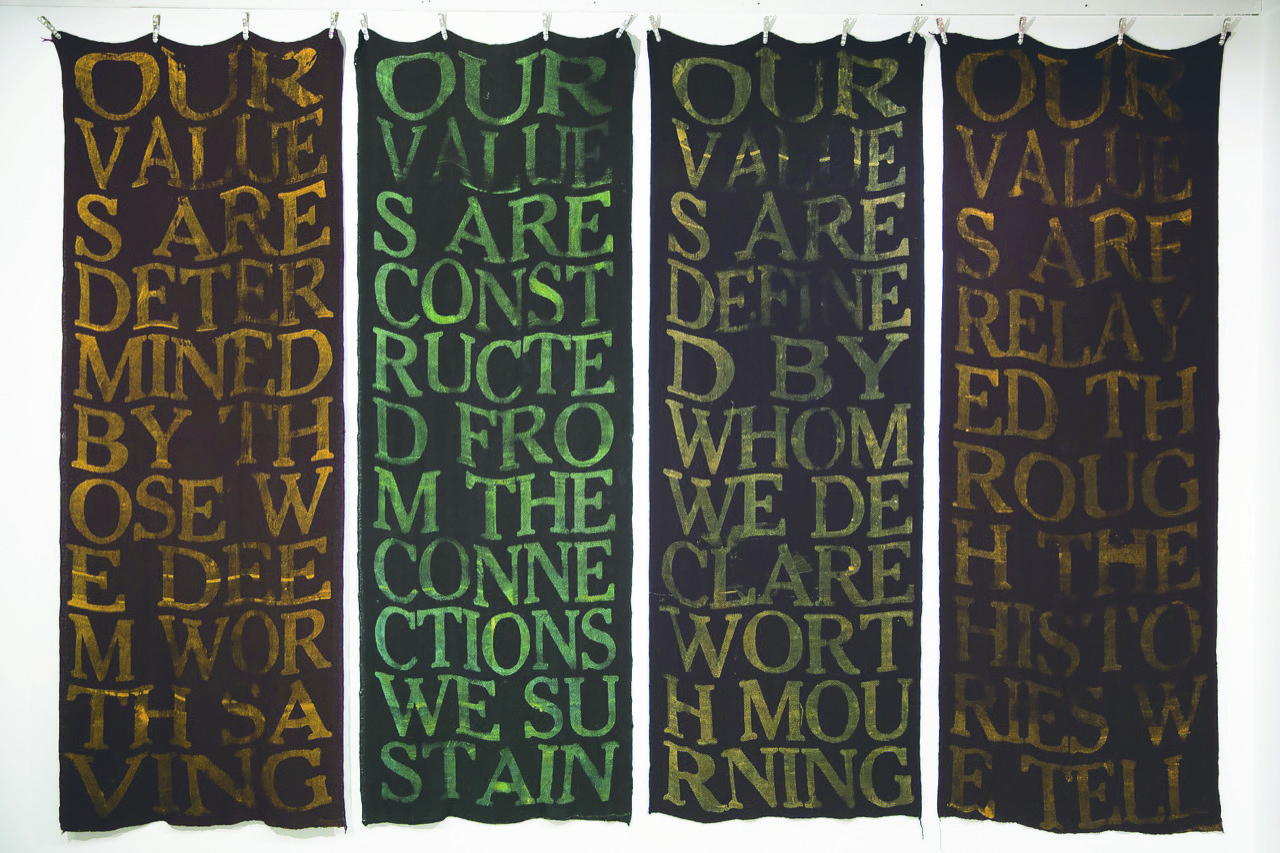

"Relational Values" by Alex Younger is part of the exhibit.
“TransformingPolitics: Art Made by Women” opened in August in the United Company Contemporary Regional Art Gallery at the William King Museum of Art, Abingdon, Virginia. This exhibitionaims to illustrate the creativity and ingenuitythat women (past and present) have used totransformpolitics. The exhibit closes Dec. 27.
“The phrase ‘transforming politics’ can imply that politics themselves are changing, or that politics are being transformed by an external source.As we celebrate the centennial of women’s suffrage, we celebrate a women-led movement that sparked a transformation of politics around the world. The suffragettes used their artistic skills, creativity and resourcefulness in order to make history and, although some political affairs have changed, the passionate interests of women have not. Women continue to make their voices heard in conversations surrounding climate change, labor, societal values, economic class, social movements, educational reform etc.,” says Anna Buchanan, curator of contemporary fine arts and crafts.
The exhibit features the work of four regional artists who take an active political stance. Margaret Gregg, Kathleen Thum, Laken Bridges and Alex Younger use theirworks of art to project their voices, thus allowing them to be heard and empowering them to continue transforming politics.
Buchanan inherited this show when she joined William King in March. “It was an exhibit that was already in the works. That being said, my thesis work and my own works of art toe the same line regarding women and politics, so I was beyond excited to take over this exhibition. I think the timing of the show is interesting; the exhibit officially opens two days after the official Centennial of the Nineteenth Amendment.
“This show connects to the suffrage movement via the timing of the exhibition and the timeline that will be displayed within the exhibition. The timeline highlightsimages of visualartists and writers that were suffragists living within the region during the women’s suffrage era. These artists and writers used their creativity, their ingenuity, and business and leadership skills to create visual and written works of art that made their individual – and collective – voices stronger. By making their voices heard, suffragists claimed space for themselves; they created agency for themselves.
“This transcends the contemporary works that people will see in the show as well; the contemporary worksof art are bold and take up space. Women are often taughtnot to take up space, rather we are taught to be small and to be soft, but through artwork, the artists in this show do the opposite. There is something about taking up space for oneself, but then what happens when we take up space collectively? There is power in that. The artists in this show take up space and make their voices heard on their own and that is powerful, but as a collective unit — seeing these works within a group and reading all of the artist statements together — I think, has its own kind of power. Some of the topics that the suffragists fought for are still topics that are being fought for todayeven after 100 years: healthcare reform, education reform and sexual misconduct laws, to name a few,” Buchanan says.
For more information, visit www.williamkingmuseum.org.
THERE'S MORE: Women’s Right to vote exhibit is at Tennessee State Museum